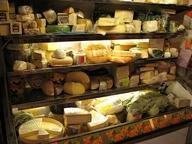Quiz Answer Key and Fun Facts
1. Strong-tasting smear-ripened soft cheese from the Vosges mountains near Germany
2. Produced by Trappist monks in French Flanders; rind coloured by roucou washes as it matures
3. Semi-soft cows' milk cheese with an orange rind, from Pays de la Loire
4. Uncooked, unpressed cow's milk cheese from Normandy, produced in square blocks
5. Soft surface-ripened cheese originating in Normandy, traditionally made from unpasteurised cows' milk
6. Soft cheese with a white mould rind originating in Île-de-France
7. Soft creamy cheese developed in 1957 as the first flavoured cheese to be marketed nationally
8. Soft-ripened triple cream cheese from Burgundy
9. Alpine cheese traditionally melted before serving
10. Sheep milk blue cheese from southern France
Source: Author
looney_tunes
This quiz was reviewed by FunTrivia editor
WesleyCrusher before going online.
Any errors found in FunTrivia content are routinely corrected through our feedback system.
